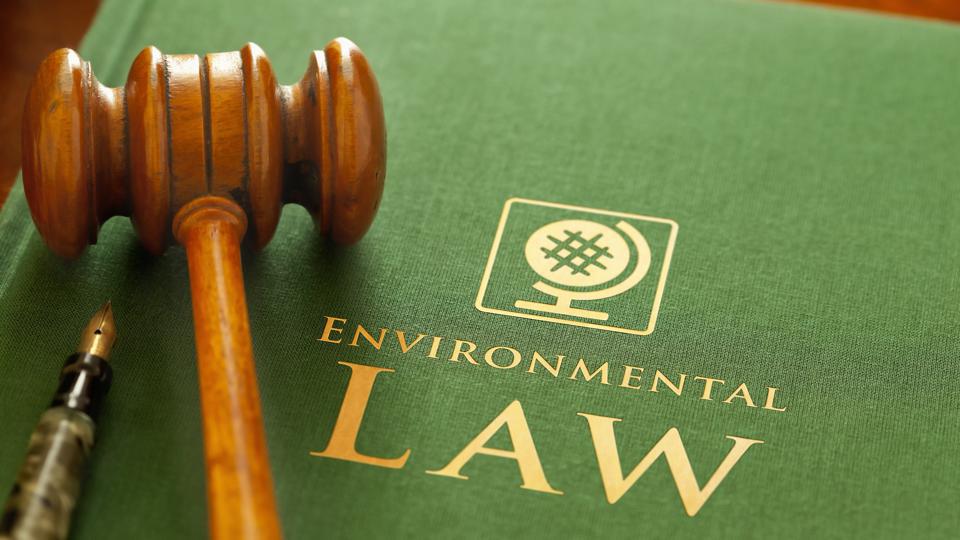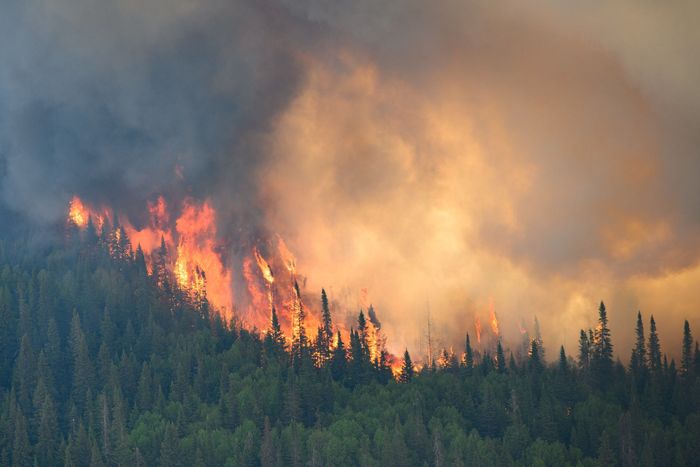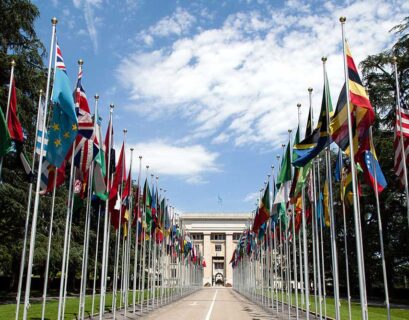Preserving Our Planet: Navigating Legal Frontiers for Environmental Conservation and Pollution Control
KEY TAKEAWAYS:
- Environmental law is a crucial tool for preserving ecosystems and addressing environmental challenges.
- It promotes conservation efforts and protects biodiversity and endangered species.
- Environmental law addresses pollution and climate change by regulating emissions and waste management.
- Human mobility and environmental rights present complex legal challenges, particularly in climate-induced displacement.
- International environmental law encourages global collaboration and adoption of environmental agreements.
- Regulatory compliance and enforcement ensure adherence to environmental protection measures.
- Balancing economic development with environmental conservation is a key goal of environmental law.
- Public participation and advocacy play a vital role in shaping environmental laws and representing community interests.
- Innovative solutions are sought to tackle emerging environmental challenges.
- Environmental law is an evolving field, adapting to new scientific discoveries and environmental issues.
Environmental law plays a pivotal role in safeguarding the planet’s natural resources, ecosystems, and biodiversity. It is a complex and dynamic field that encompasses a wide range of legal principles, regulations, and policies aimed at protecting the environment from human-induced harm. From addressing conservation efforts to tackling pollution, environmental law serves as a powerful tool in promoting sustainable development and ensuring a healthy planet for current and future generations.
This article tackles the world of environmental law, unveiling its core concepts and exploring the legal framework that empowers nations and communities to address global environmental challenges. From decoding regulations pertaining to air and water quality to navigating the legal implications of conservation and pollution control, this article sheds light on the intricate tapestry of environmental law and its critical role in safeguarding the planet for future generations.
Exploring the legal challenges and opportunities associated with conservation and pollution, there will be a deeper understanding of the complexities involved in preserving our planet’s natural beauty and ecological balance. Empowered with knowledge, individuals and policymakers alike can forge a path towards a more sustainable and harmonious coexistence with the environment.
Understanding Environmental Law
Environmental law finds its roots in the principle of protecting and preserving the natural environment. The need for environmental protection gained momentum during the latter half of the 20th century due to growing environmental awareness and concerns about human activities’ adverse effects on the planet. National constitutions, international treaties, and regional agreements form the basis of environmental law, guiding nations in addressing environmental challenges on a global scale.

Environmental law encompasses diverse elements, each contributing to the holistic protection of the environment. These elements include air quality regulations, water management laws, waste disposal protocols, wildlife preservation acts, and land use planning regulations. Each component plays a vital role in addressing different aspects of environmental challenges, laying the groundwork for sustainable development and environmental protection.
Air Quality Regulations
Air pollution poses a significant threat to human health and the environment. Air quality regulations aim to control emissions from various sources, including industries, vehicles, and power plants. Governments set emission standards and establish air quality monitoring systems to ensure compliance. Air quality regulations also encourage the use of cleaner technologies and renewable energy sources to reduce harmful emissions and improve air quality.
Water Management Laws
Preserving clean and safe water sources is crucial for human health and ecosystem well-being. Water management laws address issues such as water pollution, water scarcity, and equitable water allocation. These laws regulate industrial and agricultural practices, sewage treatment, and discharge limits to safeguard water quality. Additionally, they promote water conservation and sustainable water use to ensure the availability of clean water for future generations.
Waste Disposal Protocols
Proper waste management is essential to prevent environmental degradation. Waste disposal protocols govern the handling, treatment, and disposal of various types of waste. These protocols aim to minimize waste generation, promote recycling and reuse, and ensure the safe disposal of hazardous materials. Waste disposal regulations also encourage the adoption of sustainable practices, such as composting and waste-to-energy technologies.
Wildlife Preservation Acts
Wildlife preservation acts are instrumental in protecting endangered species and preserving biodiversity. These laws establish protected areas, wildlife reserves, and conservation programs to safeguard natural habitats and wildlife populations. Wildlife preservation acts also address issues like poaching, illegal trade, and habitat destruction, imposing strict penalties for violators to deter illegal activities.
Land Use Planning Regulations
Land use planning regulations govern how land is developed and utilized. These regulations aim to balance economic development with environmental conservation. Zoning laws, environmental impact assessments, and sustainable development plans are part of land use planning regulations, ensuring that development projects consider environmental impacts and promote responsible land use.
Conservation Challenges and Strategies
Biodiversity Conservation
Biodiversity conservation focuses on preserving the rich variety of life on Earth, including plants, animals, and microorganisms. Human activities such as deforestation, habitat destruction, and pollution pose significant threats to biodiversity. Conservation strategies include establishing protected areas, wildlife sanctuaries, and conservation corridors to maintain biodiversity hotspots. Additionally, international agreements like the Convention on Biological Diversity (CBD) encourage global collaboration for biodiversity conservation.

Protected areas and wildlife sanctuaries provide safe havens for endangered species and fragile ecosystems. National parks, wildlife reserves, and marine protected areas offer legal protection to vulnerable habitats and wildlife populations. Conservation efforts within these areas focus on habitat restoration, population monitoring, and community engagement to ensure the long-term survival of endangered species.
Conservation corridors connect fragmented habitats and enable the movement of wildlife between protected areas. These corridors play a crucial role in maintaining genetic diversity and promoting ecological resilience. Conservationists work to establish and maintain corridors through land-use planning, cooperation with landowners, and habitat restoration initiatives.
Forest Conservation and Sustainable Forestry
Forests play a vital role in carbon sequestration, biodiversity preservation, and climate regulation. However, deforestation and illegal logging continue to threaten forest ecosystems. Forest conservation efforts encompass regulations on logging practices, reforestation programs, and initiatives to combat illegal timber trade. Sustainable forestry practices aim to balance economic interests with the preservation of forest resources.
Reducing deforestation and illegal logging requires robust enforcement of laws against illegal practices. Governments and conservation organizations work together to monitor forest activities, implement forest certification programs, and promote sustainable logging practices. Community-based forestry initiatives empower local communities to manage forests sustainably and participate in conservation efforts.
Reforestation and afforestation programs aim to restore degraded forests and establish new forests on previously non-forested land. These programs contribute to carbon sequestration, soil conservation, and the restoration of habitat for wildlife. Conservation organizations and governments collaborate to implement large-scale reforestation initiatives and engage local communities in tree planting campaigns.
Combating Pollution
Air Pollution Control

Air pollution poses significant risks to human health and the environment. Environmental laws address air pollution through regulations on emissions from industries, vehicles, and power plants. Governments set air quality standards and monitor air pollution levels to ensure compliance. Implementation of clean air technologies and alternative fuels reduces harmful emissions and improves air quality.
Industrial and Vehicle Emission Control
Industries are major contributors to air pollution. Environmental regulations require industries to adopt cleaner production processes, install pollution control technologies, and reduce emissions of harmful pollutants. Incentives for adopting green technologies and penalties for non-compliance encourage industries to minimize their environmental impact.
Transportation is a significant source of air pollution. Vehicle emission standards, fuel quality regulations, and the promotion of electric vehicles help reduce vehicle emissions. Governments implement measures like vehicle inspection programs and public transportation incentives to encourage the use of cleaner transportation options.
Water Pollution Management
Clean and safe water sources are essential for human health, ecosystems, and economic activities. Water pollution management involves regulations on wastewater treatment, industrial discharge, and agricultural runoff. Governments set water quality standards and monitor water bodies to prevent contamination and ensure access to clean water.
Wastewater treatment facilities treat industrial and municipal wastewater to remove harmful pollutants before discharge into water bodies. Stricter discharge limits for industries ensure that wastewater does not harm the environment or human health. Proper management of stormwater runoff prevents contaminants from entering waterways during rain events.
Agricultural Best Management Practices
Agricultural practices can contribute to water pollution through nutrient runoff and pesticide residues. Agricultural best management practices (BMPs) promote sustainable farming techniques that minimize environmental impact. These practices include the use of cover crops, conservation tillage, and precision application of fertilizers and pesticides.
Addressing Human Mobility and Climate Refugees
Environmental Displacement and Climate Refugees
As the impacts of climate change intensify, communities face environmental displacement due to sea-level rise, extreme weather events, and resource depletion. Climate refugees are individuals forced to leave their homes and communities due to climate-related hazards. Environmental law is evolving to address the legal rights and protections of climate refugees and ensure their access to humanitarian assistance.

Climate refugees are a growing population facing unique challenges. Legal recognition of climate refugees is essential to providing them with international protection and access to humanitarian assistance. Collaborative efforts among nations can lead to the development of legal frameworks to support climate refugees and address their needs.
Preventive measures to build resilience in vulnerable communities can reduce the likelihood of climate-related displacement. Sustainable land use planning, disaster risk reduction programs, and investment in climate-resilient infrastructure contribute to safeguarding communities against environmental threats.
International Environmental Cooperation
Environmental challenges transcend national borders, necessitating global cooperation. International agreements and conventions facilitate collaboration among nations to address issues like climate change, biodiversity loss, and marine pollution. Key examples include the Paris Agreement, the Convention on International Trade in Endangered Species of Wild Fauna and Flora (CITES), and the United Nations Framework Convention on Climate Change (UNFCCC).
- The Paris Agreement and Climate Action: The Paris Agreement is a landmark international treaty aimed at limiting global warming and its impacts. Participating countries commit to reducing greenhouse gas emissions, adapting to climate change, and providing financial support to developing nations. The agreement underscores the importance of collective efforts in combating climate change.
- Protecting Endangered Species through CITES: CITES is an international agreement focused on regulating international trade in endangered species and their parts. By controlling the trade of endangered species, CITES aims to protect biodiversity and prevent overexploitation of wildlife.
- Sustainable Management of Oceans and Marine Resources: Oceans are critical to sustaining life on Earth, but they face multiple threats, including pollution and overfishing. International cooperation through organizations like the United Nations’ Intergovernmental Oceanographic Commission (IOC) fosters sustainable ocean management and the protection of marine ecosystems.
Sustainable Development and Corporate Responsibility
Corporate Social Responsibility (CSR)
Corporate social responsibility emphasizes the accountability of businesses for their social and environmental impact. Environmental laws encourage CSR by setting standards for sustainable practices, environmental reporting, and reducing carbon footprints. Responsible corporate practices contribute to the conservation of natural resources and promote environmental stewardship.
Green business practices involve integrating sustainable methods into corporate operations. These practices include energy-efficient manufacturing processes, waste reduction strategies, and the use of renewable energy sources. Businesses adopting green practices not only contribute to environmental protection but also enhance their reputation among environmentally conscious consumers.
Environmental reporting allows businesses to disclose their environmental impact and demonstrate their commitment to sustainability. Transparent reporting enables stakeholders to assess a company’s environmental performance and hold it accountable for its actions. Encouraging environmental transparency drives businesses to improve their sustainability efforts.
Sustainable Development Goals (SDGs)
The United Nations’ Sustainable Development Goals encompass 17 objectives aimed at addressing global challenges, including environmental degradation and poverty. These goals provide a roadmap for governments, businesses, and civil society to work together in achieving a more sustainable and equitable world.
Several SDGs are directly related to environmental protection and conservation. These goals focus on preserving biodiversity, combating climate change, ensuring clean water and sanitation, and promoting sustainable land use. By aligning their efforts with the SDGs, nations and organizations contribute to collective environmental progress.
Sustainable development entails considering both environmental and social factors. By integrating environmental sustainability with poverty alleviation, gender equality, and access to education and healthcare, comprehensive solutions can address complex challenges and promote a more just and inclusive world.
Considering everything that has been discussed, environmental law serves as a critical framework for addressing legal challenges related to conservation and pollution. Through robust legal mechanisms, international collaboration, and corporate responsibility, environmental law guides efforts to safeguard the planet’s natural resources and promote sustainable development. By understanding the complexities of environmental law and adopting innovative solutions, societies worldwide can create a resilient and thriving future for generations to come. Environmental protection is a collective responsibility, and through concerted efforts, we can create a healthier and more sustainable world for all.







